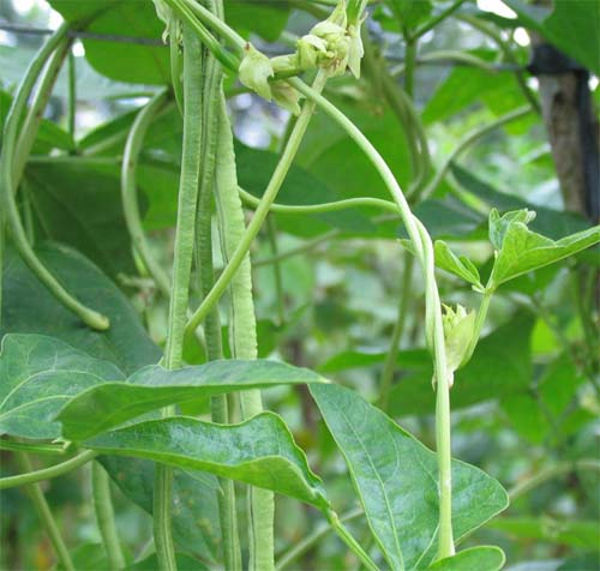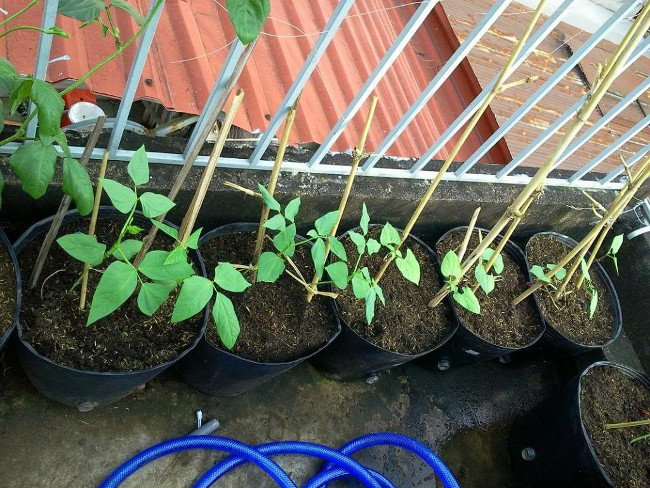How to grow safe cowpea for households
With high nutrient intake and easy planting techniques, cowpea plants are grown in many places and processed in many dishes. This is also the favorite food in the summer.
Vigna unguiculata subsp. Sesquipedalis is a subspecific subspecies belonging to the Beans family. Cowpea is an annual climbing vines, often grown to produce fruit for food.

Cowpea plants are not too complicated with planting techniques
Green cowpea fruit is 35 cm to 75 cm long, often processed similar to beans. Cowpea produces fruits about 60 days after sowing, and often sees pairs of cowpea on the tree. This plant is suitable for tropical and subtropical climate, widely grown in Southeast Asia and southern China. In Africa, cowpea is a traditional food crop, a potential source of nutrition, which enhances food security, promotes rural development and supports ecosystem sustainability.
Planting techniques
Part time
Cowpea can be grown year-round thanks to many varieties. The Winter-Spring crop falls in November to December (dl), the Spring-Summer crop in February-March dl, the Summer-Autumn crop can be sown in May-June dl and the Autumn-winter season sows from August to September dl. People should choose high land, good drainage, clean grass, apply 1 ton of lime / ha, plow tillage and dry for 7-10 days. Low-lying places must go up to 15-20 cm high beds.

People can plant trees in foam containers or in pots to save space
Drills
For climbing beans, growers need to sow 1.2 x 0.40 m, 2 holes per hole. For dwarf seeds, plant seeds at a distance of 50 x 30 cm, each hole has 2 trees. Rainy season is less sunny, trees should be sown sparingly for easy care and collection. The sunny season should be thick to gain high productivity. In addition, soil removal with Basudin and Kitazin seeds before sowing and extremely important. Seed sown from 18 - 20 kg seeds / ha (climbing beans) and 30-40 kg seeds (dwarf form).

Take care of
The amount of fertilizer depends on the nutritional conditions available in the soil and the needs of the plant through each stage of growth. Cowpea has a higher yield than cove so it is often applied with higher fertilizer. The common formula for cowpea is: N: 180 - 250 kg / ha, P2 O5: 150 - 200 kg / ha, K2O: 80 - 120 kg / ha.


Make a cowpea plant with wire
Based on the above formula, farmers can apply with the rate: 100-150 kg Urea, 50 kg DAP and 50 kg KCl or 400 - 450 kg Urea, 800 - 1,000 kg super phosphate, 150 - 200 kg KCl, 20 - 25 tons of manure and 1-2 tons of rice husk ash.
The 1st application includes steps : weeding and freeing one side of beans, applying NPK and then covering the bottom and keeping the root warm. The second application is done with weeding and beating on the opposite side, applying NPK fertilizer and resting the remaining edges. During the harvest of fresh fruit, farmers should irrigate nitrogen and potassium fertilizers 10 days / time to prolong the time of collecting fruits and beans.
Harvest

Cowpea fruit has many nutrients
Dwarf beans harvest 40 - 45 days and climbing beans harvest 45 - 50 days after sowing. First-generation productivity is very low, about 150-200 kg / ha. 4 - 5 new plants for harvest, every day the farmers should collect 1 time, each time collecting about 1 - 1.5 tons / ha. Beans for harvesting last for 30-40 days with 12 -15 litters. When collecting, people should use a knife or lightly twist the left hand , not jerking flower buds in later stages. Productivity of cowpea varieties improved from 25 to 35 tons / ha.

Fried egg beans are nutritious food for everyone
Uses of cowpea
Cowpea is a familiar dish for Vietnamese people. According to Oriental medicine, cowpea tastes sweet and salty; average, not poisonous; on the negative effects of the Tai and Túc scriptures without the Yin. Cowpea fruit has a good effect on kidney, detoxification, antiseptic . This plant is often used to treat spleen, spleen, diarrhea, vomiting, thirsty diarrhea (diabetes), kidney Diarrhea, diuresis, urination many times, women suffer from gas damage in the area .
- Safe vegetables grow well on the stone plateau
- Techniques of growing clean vegetables in simple foam pots at home
- Lang Son applied many scientific and technical advances to production
- Siberia farms grow vegetables from Africa and South Asia
- Korea: All households will have robots in 2015
- Instructions on how to grow and care for cherry tomatoes that produce fruits throughout the year
- Quickly see the secret of choosing a safe seat when the car is in distress
- Watch the video to see how the robot destroyed the safe within 15 minutes
- Hue: Raising trade momentum for farm households
- Instructions for planting clean herbs at home
- Manufacture of arsenic filters in domestic water
- Plant roses from a flower - a simple way to have a fragrant pink pot
 'Barefoot engineer' invents a pipeless pump
'Barefoot engineer' invents a pipeless pump Process of handling dead pigs due to disease
Process of handling dead pigs due to disease Radiometer
Radiometer Warp Engine: Technology brings us closer to the speed of light
Warp Engine: Technology brings us closer to the speed of light